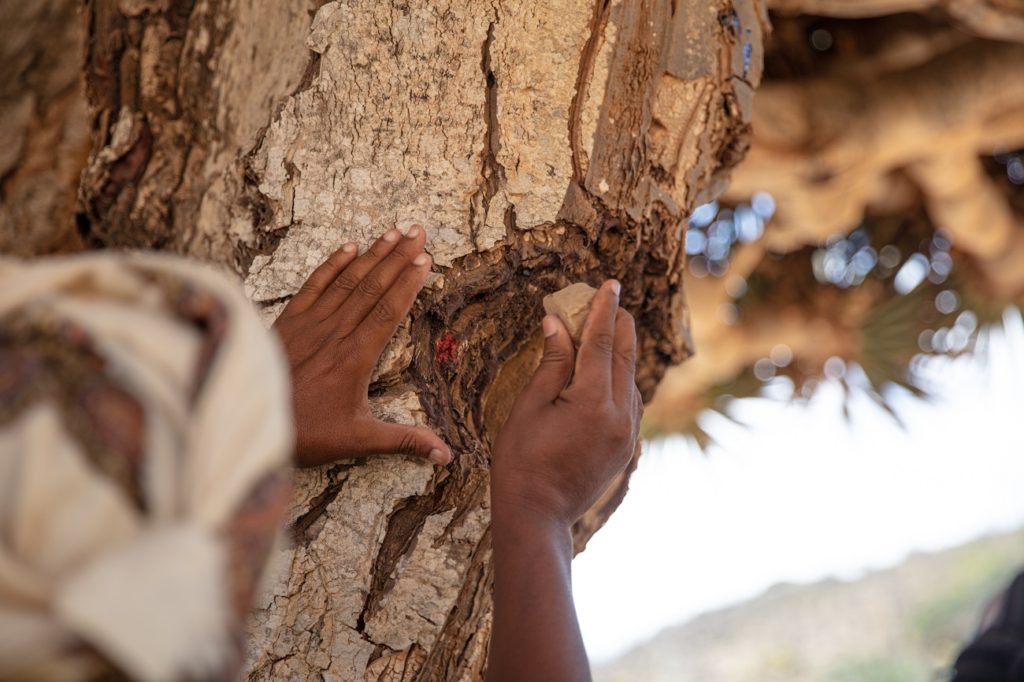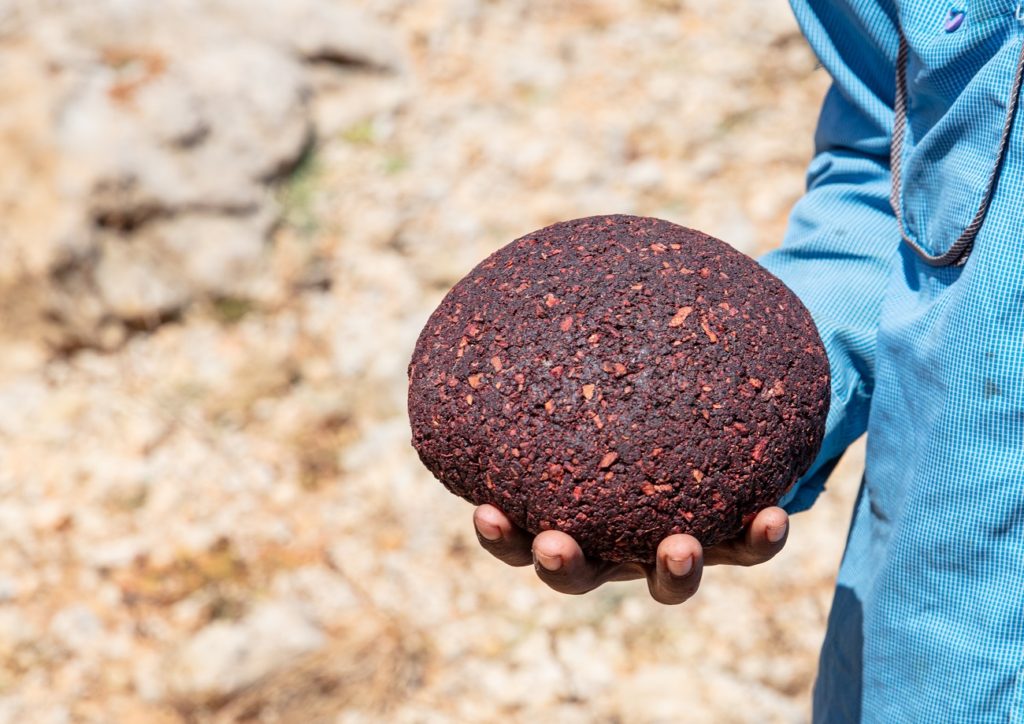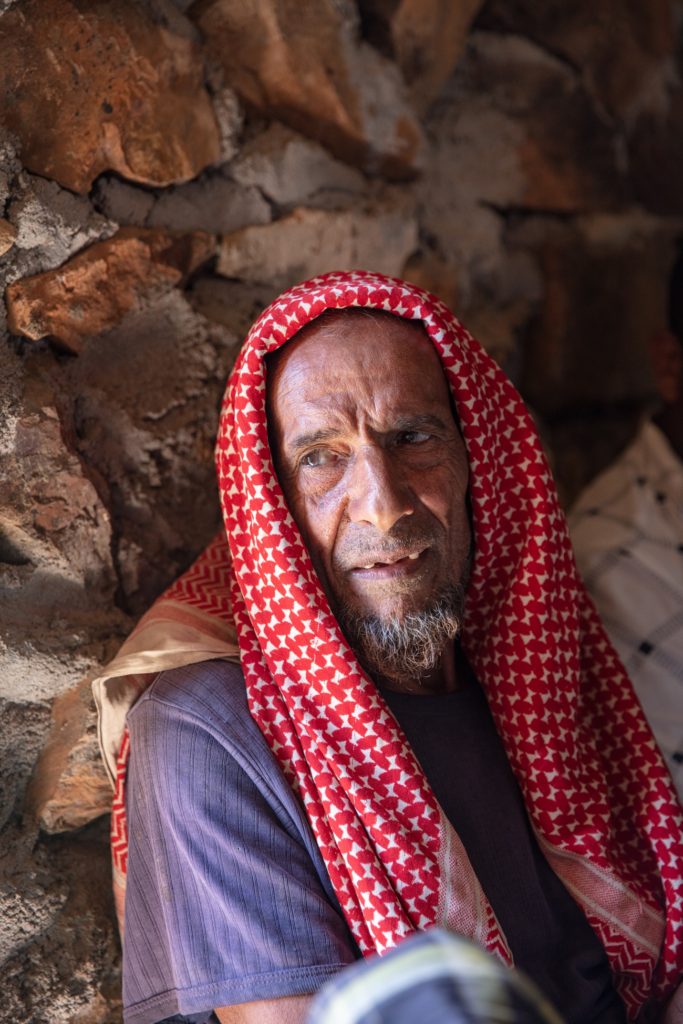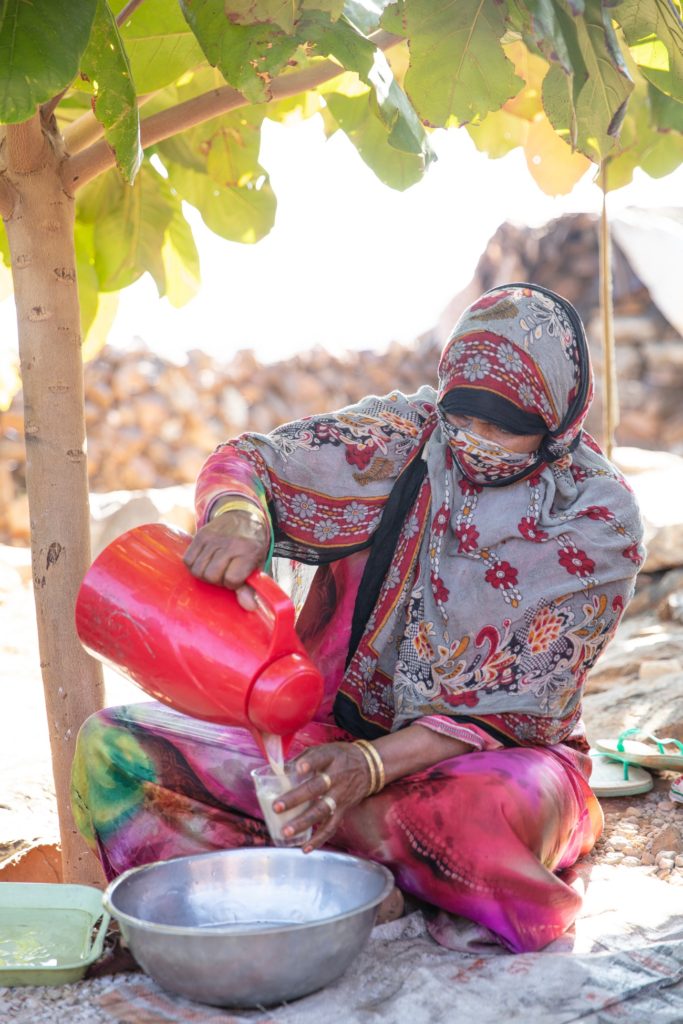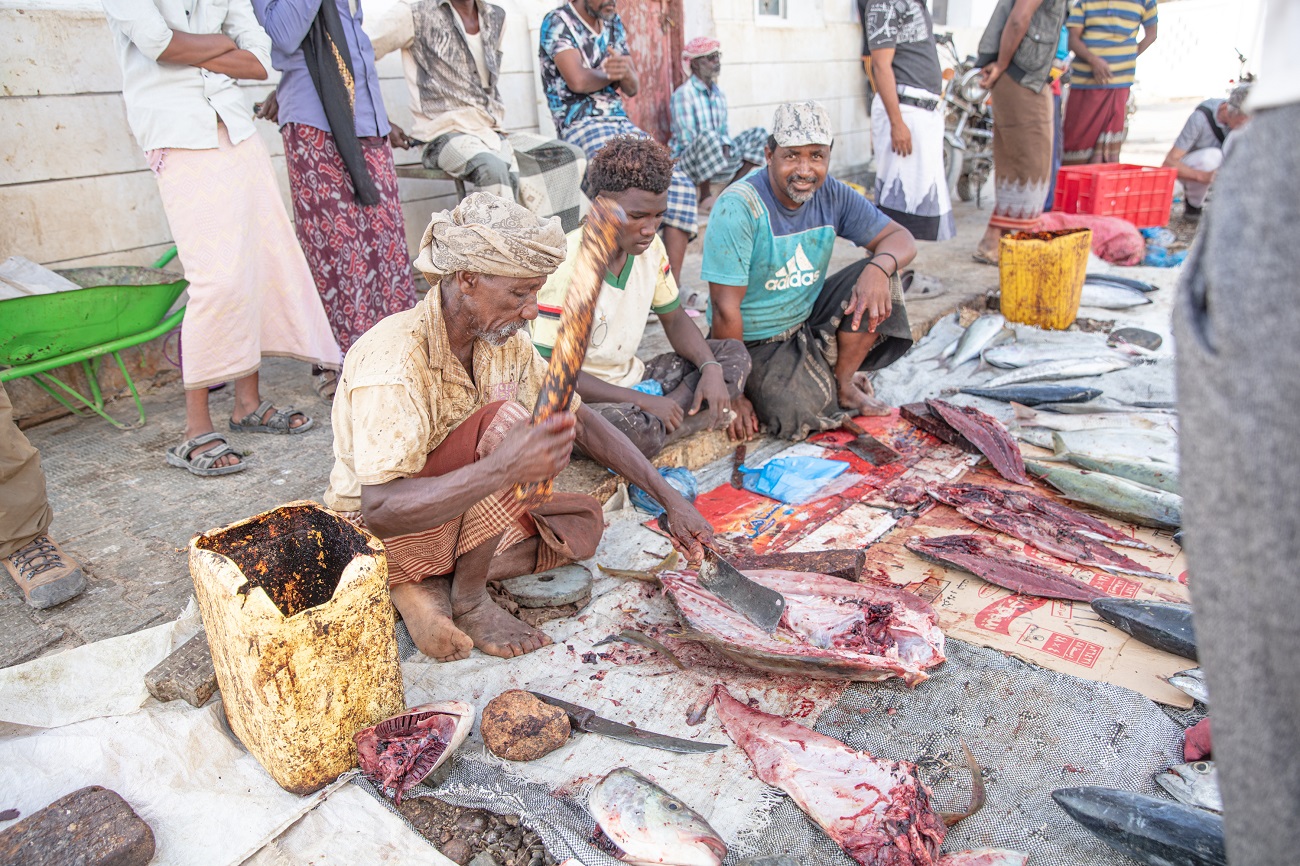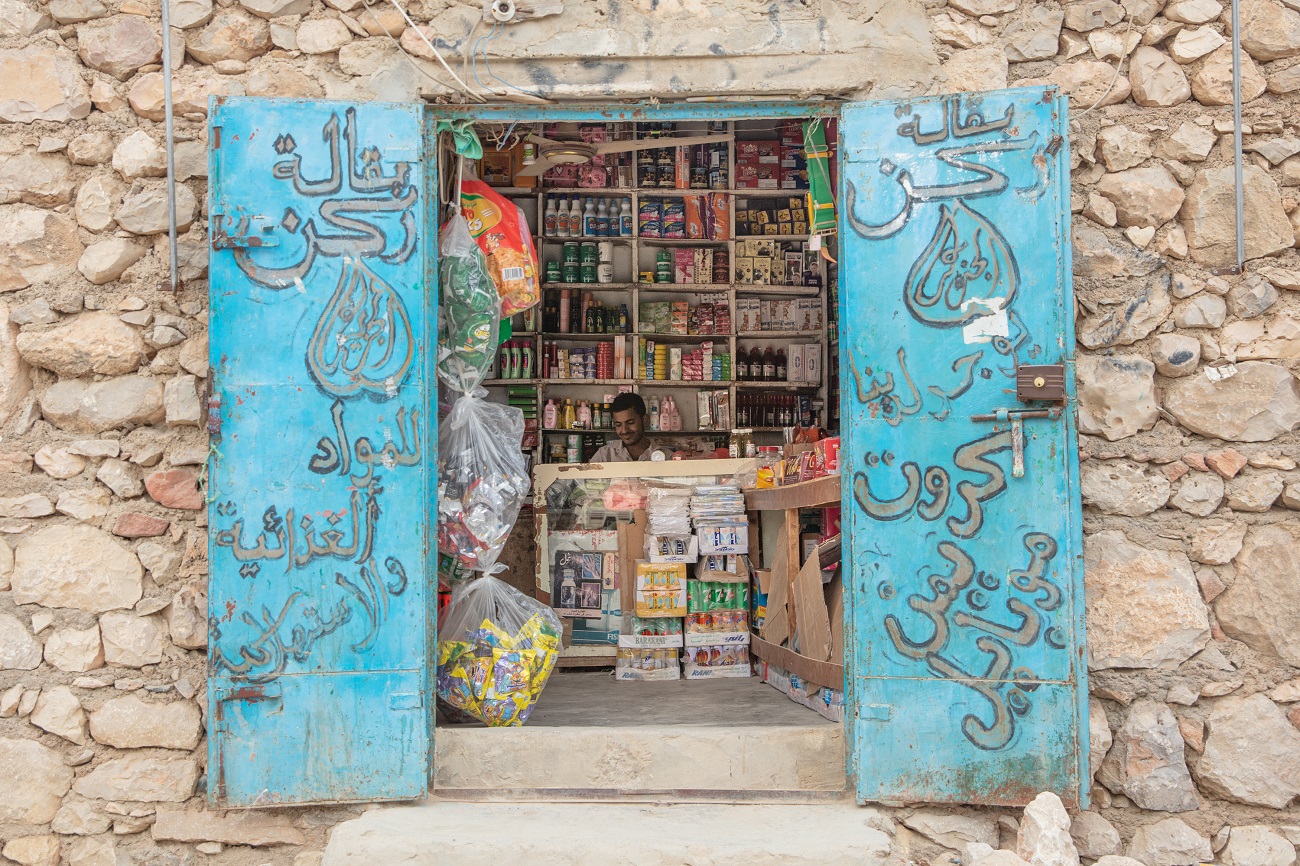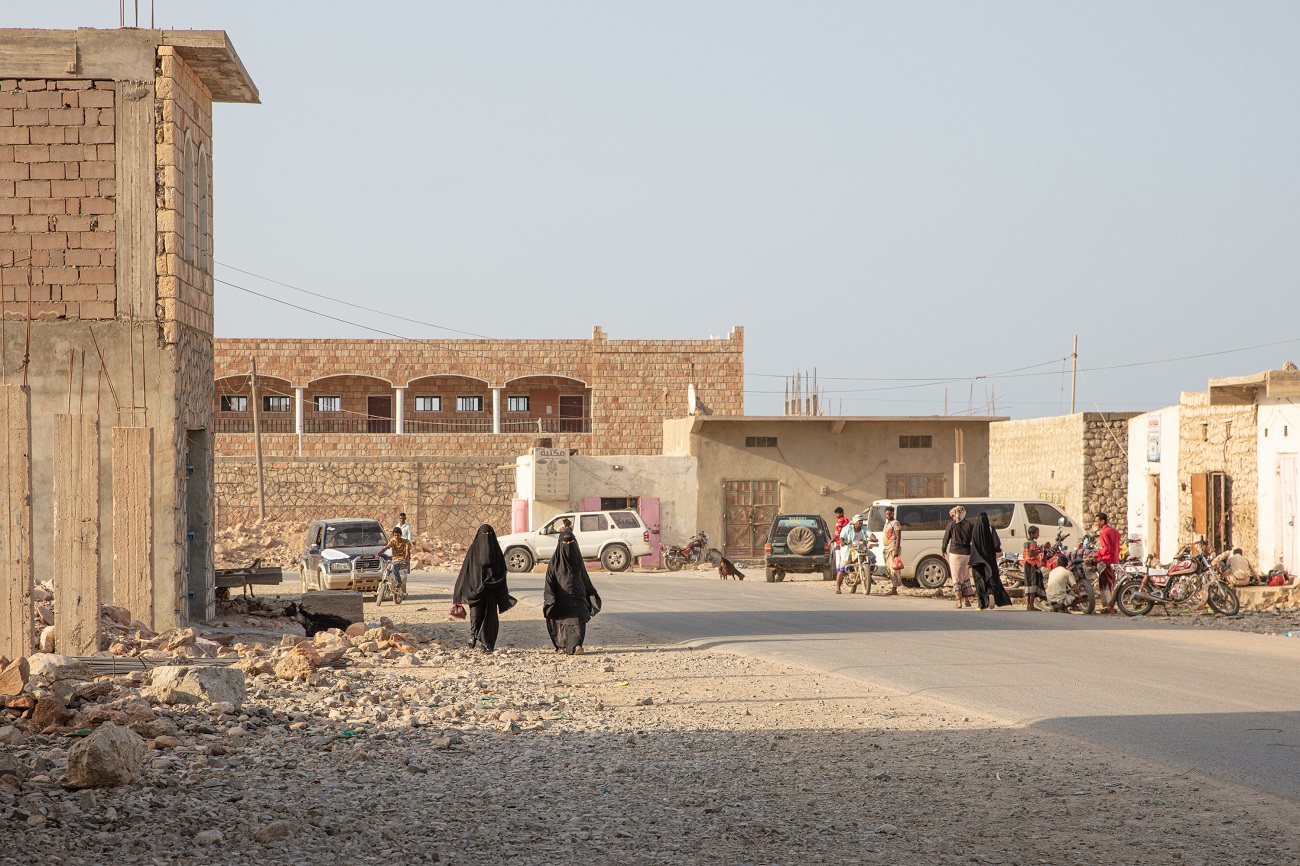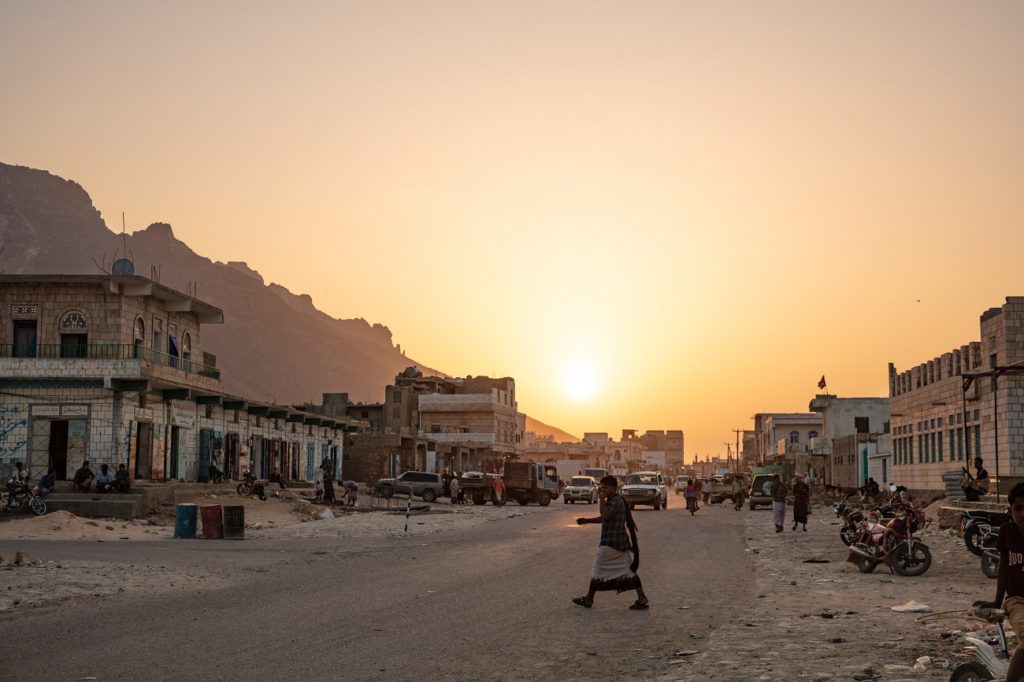Without a doubt, Socotra is one of the most special places on the planet.
With roughly 307 endemic plant and animal species, a unique and welcoming culture and some of the wildest mountains and beaches in the world, this Yemeni island is quite unlike anywhere else on Earth.
I’ve had the privilege to visit Socotra several times since my initial trip there in 2014, when, on a whim, I contacted a man named Radwan who worked for Socotra Eco Tours. Since then, Radwan has become a good friend and purveyor of making my crazy ideas come to fruition.
Every visit to the island has brought a completely different experience, yielding new sites and perspectives on areas seen before, making new friends as well as revisiting old, but also witnessing the environmental changes inflicted by cyclones, invasive species and, of course, humans. Below are just some of the many stories I’ve taken home with me.
The tree that bleeds crimson
Socotra’s dragon’s blood trees are the island’s most distinct natural feature. This bizarre tree, endemic to the island (though relative species of the Dracaena genus can be found in the Canary Islands, east and central Africa and Madagascar), bleeds a red sap when the trunk of the tree is sliced.
Its scientific name is Dracaena cinnabari, though its nickname, derived from legend, is more commonly used. Being a somewhat superstitious population, two local Socotri legends explain how the odd feature of the tree came to be. One tells the story of blood spilled between two brothers fighting to the death, while the second version is a tale of a dragon injured by an elephant during a dual. Which version is true depends on who you talk to.
To the families who inhabit the central mountains of Socotra, the dragon’s blood tree is a symbol of their home. People who live in the centre of the island will take small, sharp rocks and tap the bark of a tree until it begins to bleed its red sap. They let it dry and collect the resin, which is typically sold to others and used medicinally to cure several ailments including diarrhoea, menstrual problems, fevers and ulcers. Sometimes enough of the resin is collected over time by one person or a family and made into a large ball.
My first time seeing a dragon’s blood tree was unforgettable, set high in the Haggeher Mountains that bisect Socotra. On my return to the island, my goal was to photograph one of the famed trees underneath a starry sky.
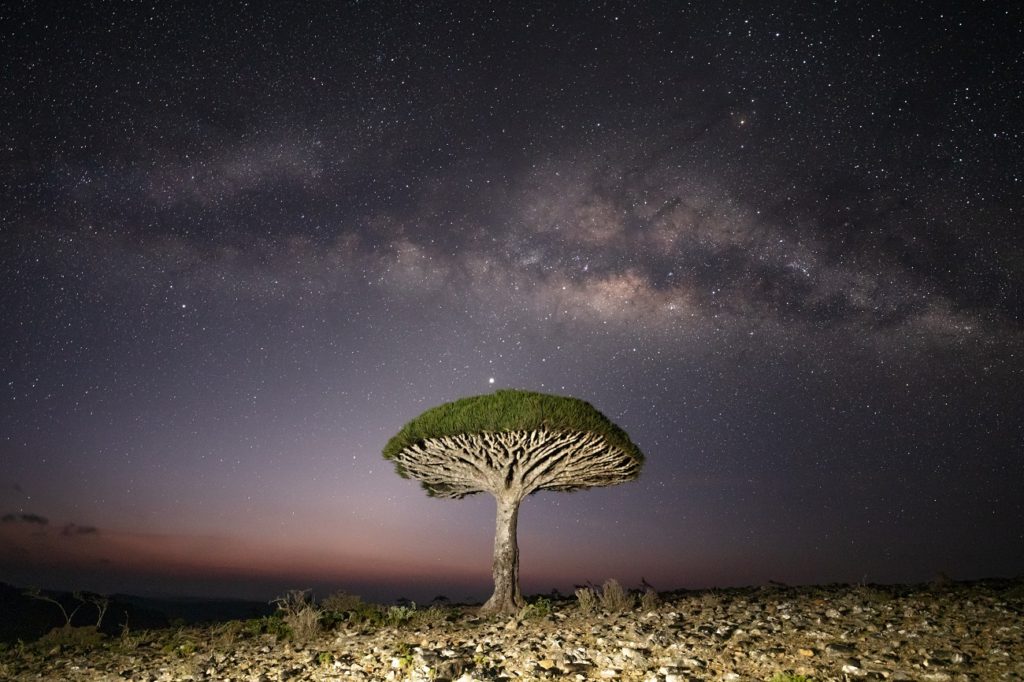
With a bit of planning, star tracking, practice light painting and a shred of patience, we had a successful mission snapping this starlit scene. If you have ever spent any time photographing the stars, you know that light can be your worst enemy. We had debated packing up and calling it a night, but we stayed up, shooting photo after photo through the night until the sun began to rise. And what a good decision that was.
Fun and games on the edge of the Arabian Sea
Located at the eastern extremity of Socotra, Erissel is home to near-desolate beaches where fishermen set sail from the small village of Nissam. One afternoon we stopped into the village to pick up a few items from a shop as the sun was setting. At this time of day, it’s pretty common to find many of the kids and families in Socotra out and about, enjoying some football, chatting and playing games.
In a matter of only a few minutes, it seemed we had amassed a crowd consisting of every child in Erissel, curiously watching, waving, saying ‘salaam’ or ‘hello’. The inquisitiveness of each and every child really resonated with me, having also grown up in a small town (although admittedly not as small as this), where most newcomers were met with curiosity.
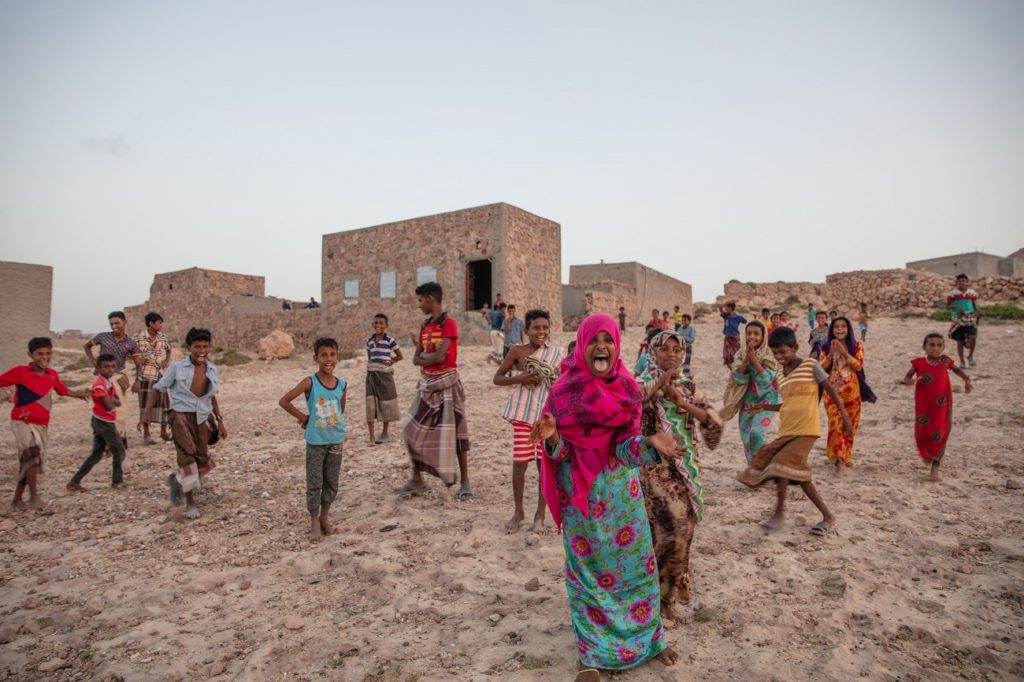
I noticed that the kids were playing a game where they would attempt to touch each other’s hands. In a way, that reminded me of the game ‘hot hands’ that we played when we were growing up back home. One child would extend their hands, while others would lunge at them, trying to slap their hands. I joined in with a game that eventually morphed into an enormous tournament of who-can-yell-louder, with everyone laughing and clapping when I managed to snap the above photo.
A Socotri handshake
A unique greeting you’ll likely witness in Socotra, typically among men, is the Socotri handshake. As the men shake hands, they press their foreheads and bridges of their noses together, reminiscent of the kunik or ‘eskimo kiss’ seen among Inuit in the Arctic, but still uniquely Socotri.
In this photo, my friend and local Socotri guide Eisa, is greeting the late Ahmed of Shu’ab with a Socotri handshake. Ahmed welcomed us all to the beach he called home upon our arrival, ushering us into his home for hot glasses of shai. I hadn’t seen Ahmed in five years at this point, but he immediately remembered who I was.
Sadly, Ahmed passed away in October 2019. Visiting Shu’ab will never be quite the same without his warm welcome.
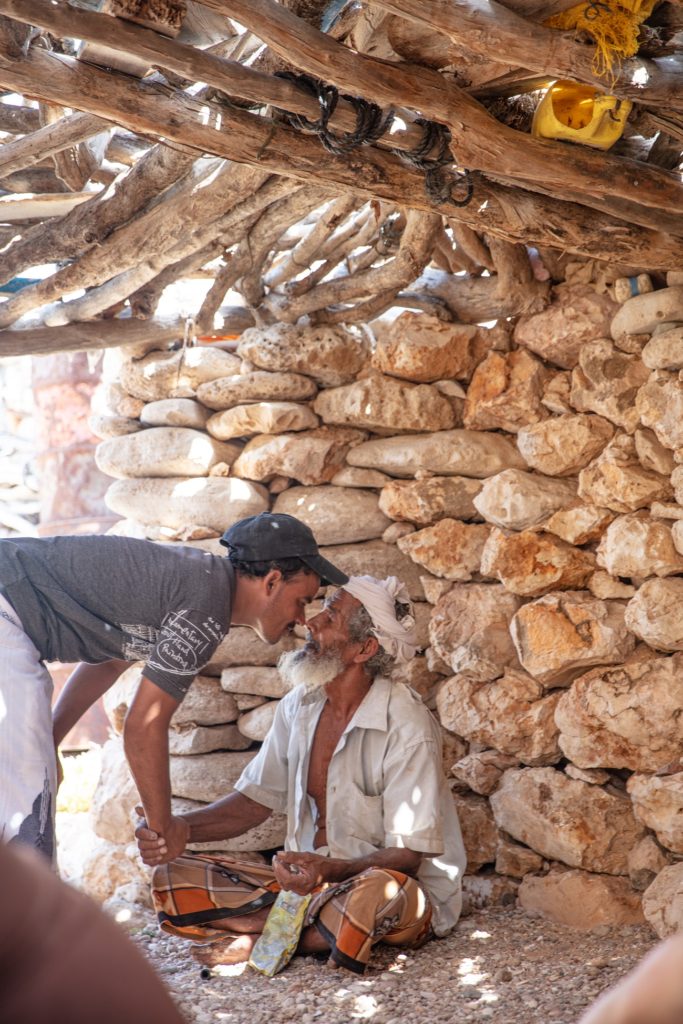
The wildest beaches you’ll ever lay eyes on
Even if you’re not a beach person, there is no denying that there is something downright magnetic about the beaches of Socotra. The crystal-clear, turquoise-glowing waters and powdery white sands of Shu’ab, Aomak and Arher among others are more than inviting.


A favourite of mine is unique Detwah Lagoon, striated with ribbons of white and aquamarine in the day, and sometimes, if you’re lucky, glimmering with sapphire bioluminescence by night.
But the real magic of Detwah goes beyond the bands of white and blue. On my first visit to Socotra, I arrived in the late afternoon. Walking along the beach I was approached by two young men who started telling me of their Uncle Abdullah, a local fisherman that I had to meet before I left.
That evening Abdullah ‘The Caveman’ Aliyu and I were introduced, and the next morning we set off into the lagoon where Abdullah has spent most of his life fishing. Abdullah is quite the character, naturally eccentric, born in a cave that overlooks the lagoon – and one he still uses to this day.


He showed me squid, octopus, fish, turtles and conch that populate Detwah’s waters. We collected scallops to bring back to his wife – her favourite, he told me – who at the time was pregnant with their sixth child.
The Lady of the Mountains
On most returns to Socotra, we try and trek to the Firmihin Forest, the location of the highest concentration of dragon’s blood trees on the island. Each time, the same local couple welcomes us: the husband leads the way through the forest, while the wife makes sure everyone is cared for at their home.
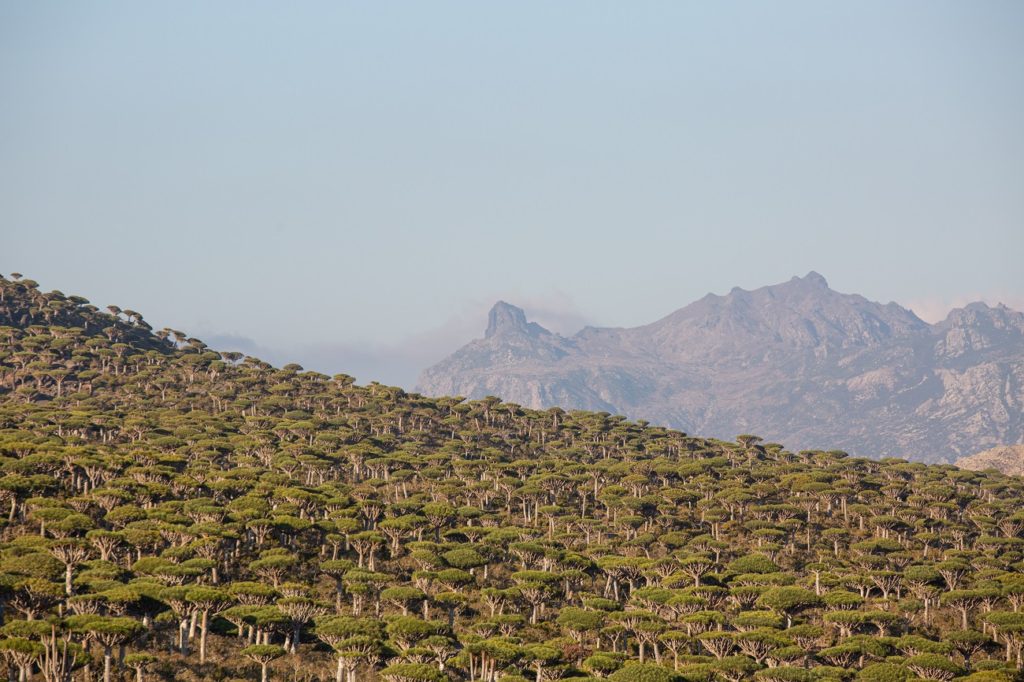
You can typically expect conversations at their home to get a bit rowdy. The husband, Nur, does not shy away from any topic, and as things get a bit wild, his wife smacks his arm, while holding back laughter, in an effort to steer the talk in another direction.
Getting a glimpse of the lives of women in Socotra can be a bit difficult, as it is still a very traditional society. Gender roles are quite pronounced, with women tending to the home and caring for children while cloaked behind brightly coloured abayas and headscarves.
However, there are a handful of more outgoing women on the island who are happy to share insights of their daily lives. Nur’s wife is among these ladies, and happily gives tours of her kitchen and even demonstrates how she makes a fermented goats’ milk similar to kefir. (You can read more about Socotra’s pioneering women in Janice Booth’s article in October’s issue of The Travel Club.)
Scenes around Hadiboh
Hadiboh isn’t on the to-do list of many travellers who come to Socotra, in fact, some never visit it at all. Despite its issues, I have always enjoyed my visits to the capital, a town I believe is full of character, even if that means wading through shin-deep plastic rubbish in the narrow alleys of the souq.
Every time I wander the streets, I’m met with friendly smiles, waves and even stopped and requested to snap photos. From fishmongers to young men selling chips, to niqab-clad women, giggling children and men cradling goats, I have always felt welcome in Hadiboh.
